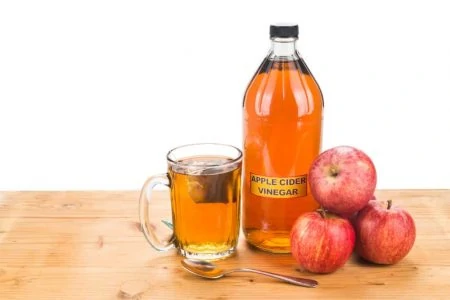In the United States, approximately 5% of women use at least one addictive drug while pregnant. We have gathered essential statistics and facts to shed light on the reality of substance abuse during pregnancy. This guide aims to inform mothers, healthcare professionals, and families about the risks and consequences involved.
Read on to understand the prevalence of drug use, the physical effects on the fetus, and how to spot the signs of addiction.
Key Takeaways
- Prevalence: In the U.S., about 5% of women reportedly use at least one addictive drug during their pregnancy.
- Marijuana risks: Using marijuana while pregnant can increase the risk of stillbirth by 230% and is used daily by almost 3% of expectant mothers.
- Developmental impact: Children exposed to drugs in utero often face learning difficulties and behavioral issues later in life.
- Warning signs: Indicators of substance abuse include dilated pupils, sudden weight loss, and behavioral changes like withdrawal or hostility.
25 Statistics and Facts About Drugs While Pregnant
Understanding the scope of drug use during pregnancy helps us support those struggling with addiction. We have compiled 25 critical statistics and facts regarding the risks, prevalence, and outcomes of using drugs while expecting.
Substance Abuse During Pregnancy
First, we look at how common substance abuse is among pregnant women in the U.S. and the demographics most affected.
- Overall prevalence: Approximately 5% of pregnant women use at least one addictive drug (1). Other data suggests that between 8% and 11% of expecting women aged 15 to 44 use substances like tobacco or alcohol during pregnancy (2).
- Marijuana trends: Cannabis is the most commonly used illicit drug during pregnancy. In 2020, nearly 3% of pregnant women reported daily or near-daily use, while 8% had used it within the past month (3).
- Polysubstance use: Many women do not stick to one substance. Polysubstance use (mixing drugs like marijuana, alcohol, and tobacco) significantly amplifies the health risks to the fetus compared to using a single substance.
- Cocaine challenges: Tracking cocaine use is difficult because users often avoid prenatal care to evade detection (4). However, users are likely to suffer from poor nutrition and use other harmful substances alongside cocaine.
- Opioid crisis: Opioid use has surged. Diagnoses of opioid-related issues during pregnancy jumped 131% between 2010 and 2017 (5). In 2019, 7% of women reported using prescription opioids during pregnancy, with 20% admitting to misuse.
- Demographics: Addiction affects everyone, but trends exist. One study noted that 67.6% of pregnant women using nonmedical drugs (excluding marijuana) were non-Hispanic White (6). Additionally, over 72% had a household income under $20,000, highlighting a link between lower socioeconomic status and substance use.
Effects of Drugs During Pregnancy
Illicit drugs, and even some legal ones like caffeine or nicotine, pose severe threats to pregnancy health. Here is how substances like cocaine, fentanyl, and opioids physically impact the mother and the pregnancy.
- Placental abruption: Stimulants can cause the placenta to detach from the uterine wall prematurely (7). Cocaine users face a 58% higher risk of placenta-associated complications compared to non-users (8).
- Preterm birth: Drug use often leads to early labor. Statistics show that 24.3% of cocaine users and 11.6% of marijuana users deliver preterm, compared to just 6.7% of non-users (9).
- Stillbirth rates: The risk of stillbirth rises dramatically with substance abuse. Marijuana use increases the risk by 2.3 times, while stimulants and prescription pain relievers raise the risk by 2.2 times (10).
- Maternal health risks: Mothers who use drugs face higher chances of heart attacks, strokes, seizures, and respiratory failure (11). They are also more susceptible to anemia, hepatitis, and other blood infections (12).
- Miscarriage links: Methamphetamine and cocaine are strongly linked to early pregnancy loss. These stimulants constrict blood vessels, depriving the fetus of oxygen and nutrients needed for survival.
- Low birth weight: Drug exposure often results in babies weighing less than five pounds, eight ounces. These infants may also have smaller head circumferences, indicating restricted brain growth.
- Teratogenic effects: Many drugs act as teratogens, agents that disrupt normal fetal development (13). This can lead to a range of physical birth defects, sometimes referred to as Fetal Drug Syndrome.
Effects of Drug Exposure on Child Development
The consequences of drug use extend far beyond delivery. These facts highlight how prenatal exposure affects a child’s health and cognitive abilities long-term.
- Heart defects: Prenatal drug exposure increases the likelihood of congenital heart defects. These issues can affect the heart’s walls, valves, and arteries, often requiring surgery (14).
- Neonatal Abstinence Syndrome (NAS): Babies exposed to opioids, antidepressants, or sedatives in the womb often go through withdrawal after birth (15). Symptoms include tremors, seizures, excessive crying, and feeding difficulties, lasting from a week up to six months.
- Academic struggles: Evidence suggests that exposure to nicotine, marijuana, or meth impairs a child’s ability to learn later in life (16). These children often require special education support.
- Behavioral issues: Toddlers with a history of prenatal exposure often struggle with emotional regulation. Parents may notice hyperactivity, prolonged tantrums, and extreme difficulty handling transitions between activities.
- ADHD correlation: There is a statistical link between in-utero drug exposure and ADHD diagnoses in adulthood. These individuals are more likely to require medication for attention deficits.
- Language delays: Cocaine exposure is specifically linked to delayed language skills through early adolescence (17). While some children catch up in their teenage years, early intervention is crucial.
Signs and Symptoms of Substance Abuse In Pregnancy
Identifying drug use early can save a life. If you suspect a friend or family member is struggling, look for these physical and behavioral warning signs.
- Neglected responsibilities: A major red flag is the sudden inability to manage daily tasks. The individual may start missing work, skipping prenatal appointments, or failing to meet family obligations.
- Physical deterioration: Look for sudden weight loss, poor hygiene, or a generally unkempt appearance that is out of character for the person.
- Mood instability: Watch for extreme mood swings. The person may seem withdrawn, unusually fatigued, depressed, or suddenly hostile when asked about their health.
- Specific heroin signs: Heroin use often leaves physical marks. Look for “track marks” (needle pricks) on arms or legs, or wearing long sleeves in hot weather to hide them (18). Other signs include dry mouth, scabs, and paranoia.
- Risky behavior: Addiction impairs judgment. Pregnant women abusing drugs may engage in reckless driving, unprotected sex, or other dangerous activities despite the risks to the baby.
- Ocular changes: Eyes often reveal drug use. Look for consistently bloodshot eyes, pinpoint pupils (opioids), or dilated pupils (stimulants).
Getting Help
If someone you know is using drugs while pregnant, consult a healthcare provider or your local health department immediately. You can also call the SAMHSA (Substance Abuse and Mental Health Services) National Helpline at 1-800-622-HELP. This service is confidential, free, and available in English and Spanish.
I Just Found Out I’m Pregnant, and I’ve Been Taking Drugs
Discovering you are pregnant while actively using drugs is frightening, but honesty is your best policy. Tell your healthcare provider immediately. They are there to ensure safety, not to judge. They will schedule a checkup to assess the baby’s health and create a plan moving forward.
If you are taking prescription medications, do not stop taking them abruptly. Sudden withdrawal can be more dangerous to the fetus than the drug itself. Always consult your doctor for a safe tapering plan.
If you are struggling with addiction, consider joining a support group or seeking counseling. Having a strong support system is vital for a healthy pregnancy.
Finally, if you used a substance before you knew you were pregnant (before implantation), try not to panic. It is unlikely to have caused major damage, but you must stop immediately and inform your doctor.









